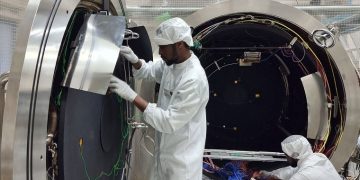Hon. Monica Musenero Masanza, the Minister for Science Technology and Innovation, has said Uganda’s first satellite PearlAfricaSat-1 has a multispectral camera payload which will provide research and observation high-resolution image data to support weather forecasting; land, water, and mineral mapping; agriculture monitoring; infrastructure planning; border security, and disaster prevention.
“With our own data, analysis and prediction of weather, water quality, soil fertility, landslides, and drought will be more efficient,” she said in a statement on Saturday.
“The satellite will also play a vital role in planning, resource management, and environmental impact assessment in our oil and gas industry,” added Dr Musenero.
The launch to the International Space Station will take place on Sunday, 6th November 2022 at 12pm EAT.
She said the live broadcast will be on UBC TV at 12:00pm (EAT) and NASA TV youtube link: https://www.youtube.com/watch?v=2 IX51GlDOfg.
The satellite will subsequently be deployed into low earth orbit in December 2022.
Uganda is also setting up an Earth Station at Mpoma, Mukono for command, control, and management of the satellite here in Uganda, by Ugandans.
In April 2020, Uganda took a significant step towards creating an indigenous space program by sending three engineers: Edgar Mujuni, Derick Tebusweke, and Bonny Omara, to obtain training in satellite design, build, test, launch, and operation as part of the BIRDS-5 project, led by Kyushu Institute of Techn010U, Japan.
On May 10, 2022, the satellite built by Uganda engineers, named PearlAfricaSat-1, was handed over to the Japan Aerospace Exploration Agency (JAXA) for final testing.
The satellite successfully completed all tests and was subsequently handed over to the United States of America’s National Aeronautics and Space Administration (NASA) for launch and deployment.











